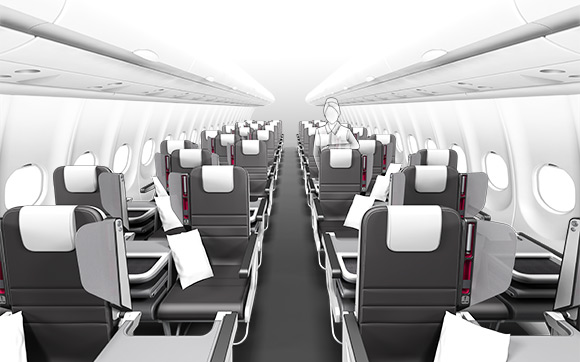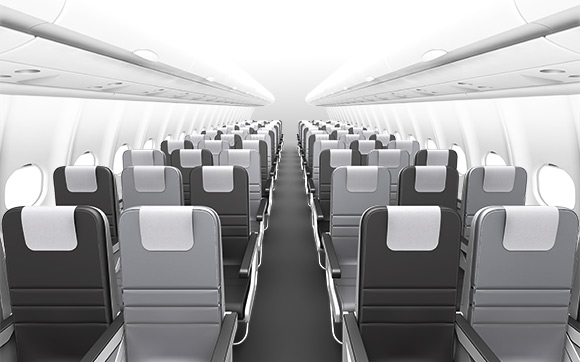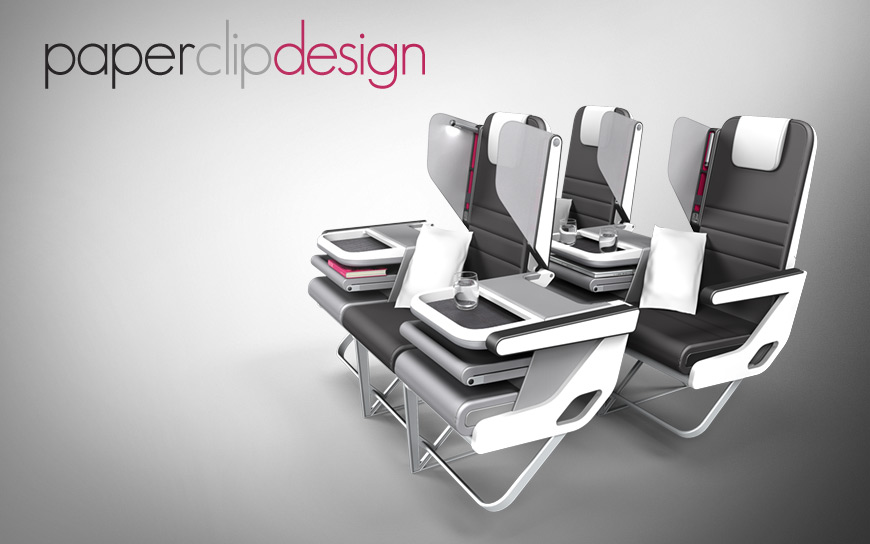
CHECKERBOARD
The Checkerboard Convertible Seating System is an array of seats that are readily convertible between economy and business class.
Checkerboard gives operators the flexibility to adjust cabin configuration for each flight to match the huge variability and unpredictability in demand, allowing them to minimize cost while giving business travelers a differentiated experience.
This innovative concept was shortlisted as a finalist in the "Industrial Design & Visionary Concepts" catergory at the Crystal Cabin Award 2013.
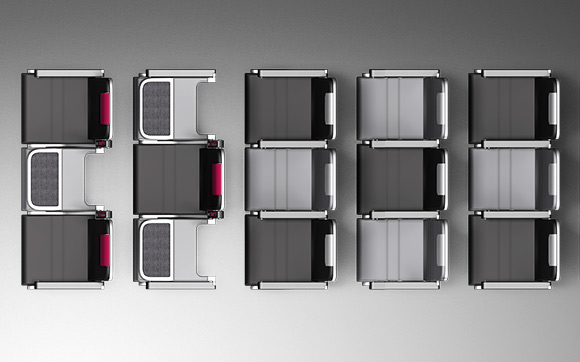
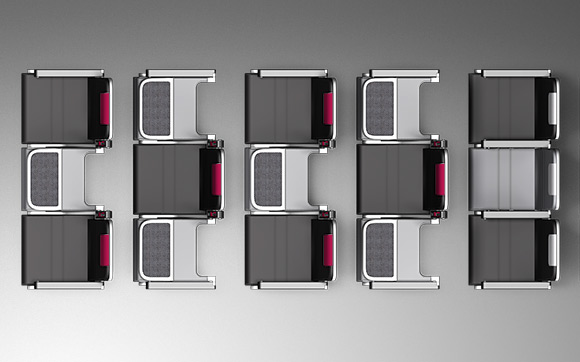


CHECKMATE
The Checkerboard is targeted for the short haul market. Unlike existing convertible seating solutions in the market where only the seat width is adjusted, Checkerboard gives business class passengers more legroom in addition to just width.
The principle is simple- every other seat, in both x and y axis, can be folded in a way that exposes more legroom to the seat behind. Thus every remaining seat, after the transformation to business class, will be next to and behind empty spaces, giving the occupants much more room to wiggle.
QUICK CONVERSION
The transformation is done in a few easy steps that cabin crew can perform before each flight. In this way, the desired ratio between business and economy class can be achieved in real time based on the final booking numbers.
The resulting business class has a density very comparable to existing products, with 30" pitch installations equivalent to 40" pitch at 4-abreast on a typical narrowbody
Click on the image on the right to watch a 3D animation of the conversion process on Youtube.
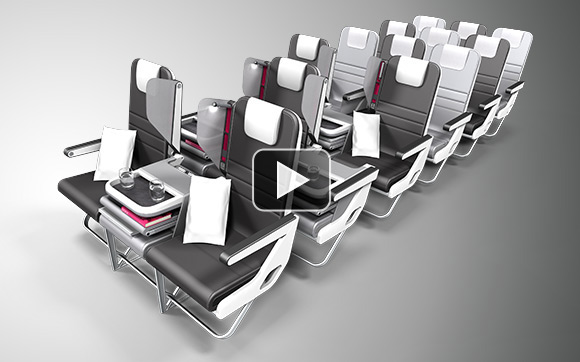
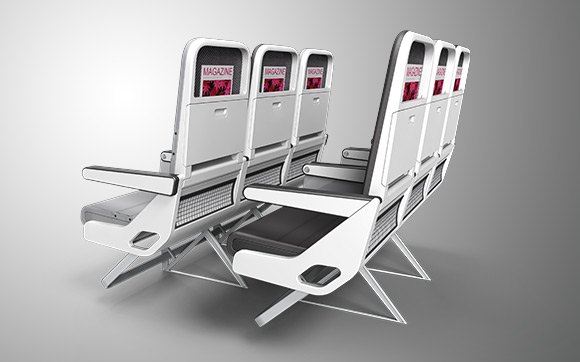
BEST OF BOTH WORLDS
Checkerboard gives operators flexibility without compromising seat density nor customer appeal, enabling them to address the needs of two very different segments using just one type of hardware.
In its economy configuration, Checkerboard functions just like a typical modern coach class seat designed for short haul flights, with seatback mounted table, high back literature pocket that maximizes legroom, and a high pivot recline that reduces intrusion into living space of the passenger behind.
BUSINESS CLASS COMFORT
When transformed into business class, Checkerboard reveals a host of extra amenities to differentiate itself from economy class. Next to passengers are padded armrests and extra-large cocktail tables, underneath which lies a storage rack suitable for items like books and laptops.
Up with the original armrests are lightweight privacy screens, as well as reading lamp, mini storage pocket for items like glasses or mobile phones, power sockets, as well as coat hooks.
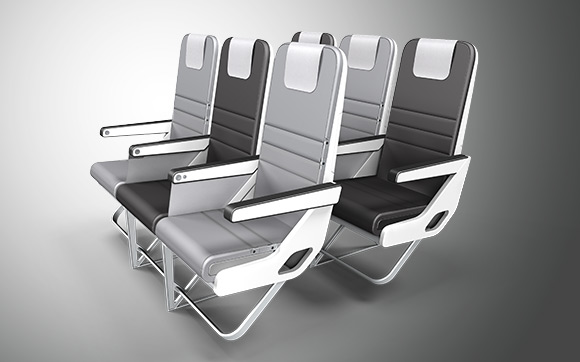
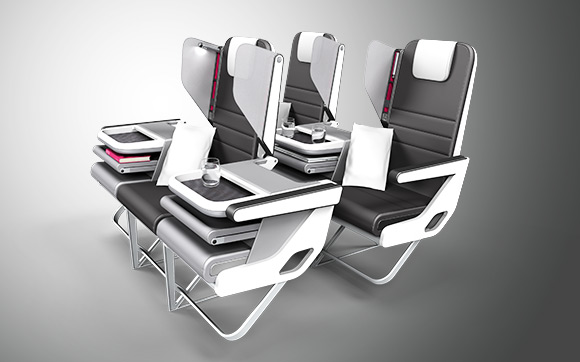


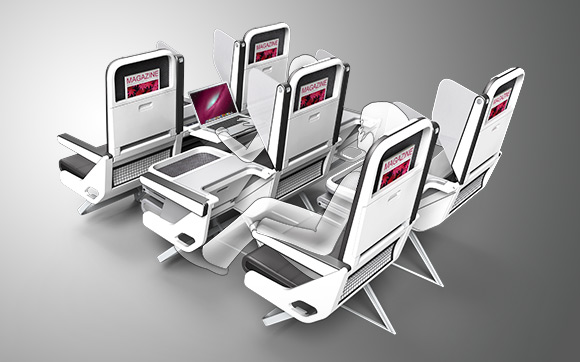
LET THERE BE SPACE
Checkerboard’s business class passengers enjoy much greater personal space. The folded seats create up to 8” additional legroom, while the raised armrest increases seat width from 17” to 19” for aisle & window seats, and 21” for middle seats.
The vast unobstructed open space in front of every passenger not only gives them ample room to use laptops, it also adds tremendously to the perception of space. The staggered layout maximizes average distance between passengers- a desirable outcome as most business travelers travel alone.
HELLO STRANGERS
Checkerboard’s business class configuration promotes a more harmonious passenger dynamics. Passengers need not worry about the sudden recline of the seat in front, nor do they need to be concerned about encroaching other’s space when they recline.
Privacy screens shield occupants from the line of sight of people sitting diagonally behind, while the recess in front of seats makes it easier for the window seat occupants to move in or out without having the aisle-side passengers leave their seats.
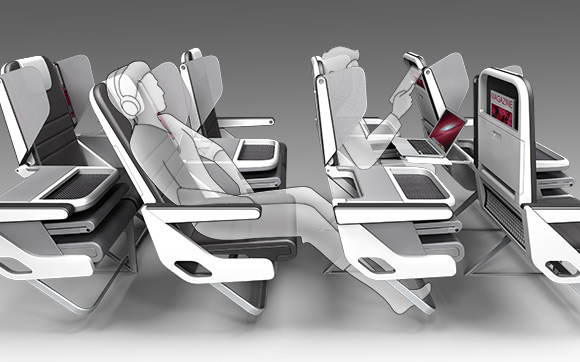
SPLIT PERSONALITY
Flexibility in cabin configuration can have a significant impact torwards revenue, and hence the profitability of an airline. In addition, fleet assignment will also be made simple as the same aircraft can be assigned to different markets with contrasting demand pattern.
But for paying customers it is the value for money that's important. The Checkerboard is an innovation that adds to both sides of the equation: for high-end customers, a truly differentiated product that’s on par with dedicated business class cabins, and for airlines, a flexibility that maximizes profitability.
